Four Multi-GPU Z77 Boards from $280-$350 - PLX PEX 8747 featuring Gigabyte, ASRock, ECS and EVGA
by Ian Cutress on August 22, 2012 9:15 AM ESTASRock Z77 Extreme9 BIOS
If my initial outburst in the overview of the ASRock Z77 Extreme9 passed you by, I will quickly go over it again:
When reviewing the Z77 Extreme6, ASRock were slightly disappointed that the board did not match the Gigabyte and ASUS motherboards for performance, due to the their use of MultiCore Enhancement (MCE) for more MHz under full CPU use. ASRock quickly offered me a BIOS with MCE enabled, but this was after I finished the review and not immediately available to the public, so I refused. I informed them when I would be reviewing the Z77 Extreme9, giving them ample time (~4 weeks) to make ready a public BIOS for the board which I would update for testing. When it came around to testing however, the BIOS was not MCE enabled by default.
At the time of testing, the latest BIOS available was 1.50. Since then however, the latest BIOS on the website is now 1.40. Under the changelog for the 1.40 BIOS, it says that it offers a ‘non-K OC’ mode, suggesting that some form of overclocking or MCE is enabled for non-K processors. But MCE for K processors is not present, and thus the Z77 Extreme9 falls behind in terms of performance in benchmarks requiring more than one or two cores.
Nevertheless, the ASRock BIOS is easy to understand. Back at the start of P67, the ASRock P67 Extreme4 was the first motherboard with a graphical interface that I encountered. Since then, the basic layout premise has been maintained, but it certainly looks a lot cleaner. Even more so now given that it has now started to become standard that BIOSes have screenshot buttons, rather than pointing a camera at a monitor:
ASRock P67 Extreme4 vs. ASRock Z77 Extreme9
On the front screen, we get a nice amount of information about the system – the motherboard, the BIOS version, the processor (and speed), and the memory (with speeds). What the BIOS is missing is a direct list of temperatures, fan speeds and voltages on this screen though, just as a quick reference for system builders and diagnosis for issues that may arise. There is also scope to present this information in a myriad of ways under the graphical theme.
Alongside this data on the main screen, ASRock are putting two features forward which we have observed on the other Z77 motherboards. The first is their system browser, which is essentially a 2D version of Gigabyte’s ‘3D’ BIOS without the extra controls. However, it does allow users to see what is installed on the motherboard and where, and to also identify if it is correctly recognized at POST.
The other feature is the Online Management Guard, or called by the more eye-rolling acronym, OMG. This gives the user control over when the network ports should be enabled or disabled, related to the system time. Should a parent want their child’s internet access stopped by 10pm every night, here is an opportunity to set it. The only way it could be re-enabled is by a user (or child) going into the BIOS and adjusting the settings. The alternative is that the user (or child) could end up using a search engine to find a solution and coming across this review. Once the user (or child) has found away around the problem, the utility of OMG is essentially null and void. Also, it really needs a software interface in the OS, which is currently not provided.
The bulk of the interest of the BIOS will be in the OC Tweaker menu. In this menu, we have a selection of automatic overclock options, from the ‘Advanced Turbo 30’ to the ‘Optimized CPU OC Setting’. The former applies CPU voltage, load line calibration, and a 47x multiplier, whereas the latter offers more conservative settings from 4.0 GHz to 4.8 GHz in 200 MHz increments. These settings are tested in our overclock section for this board.
Personally I prefer motherboards where the users can define the CPU multiplier, additional voltage for the turbo mode and power limits all in one menu. To be honest, I had no reason to raise the power limits above automatic for air/water overclock testing. The ASRock also took my XMP profile first time, which in the past on other boards has not always been the case. It is also handy for the voltage and load line calibration settings that ASRock provide an image/explanation of what each setting does, to avoid confusion.
New on the ASRock series is their PWM configuration menu. This is usually attached to digital power solutions, and gives the user control of power limitations and calibrations relating to voltage and OCP. However, for ASRock PWM configuration means something else. Insert a menu of random options that I have no idea what they mean:
An important feature that ASRock have put into their BIOSes is for users to update the BIOS via a direct online connection from within the BIOS. This means that inside the BIOS file is a version of the network driver, and ASRock have programmed this to check the online servers for the latest version. This works great if you are directly connected via Ethernet to a DHCP source, but not for WiFi over USB or for an ICS home network reliant on self-DHCP.
If the internet is unavailable through a network cable, then users can place the latest BIOS on a USB stick and also update it through the GUI.
All the fan controls are located in the H/W Monitor menu, which also showcases temperatures, fan speeds and voltages (note, some of this information should be copied into the Main screen menu). Fan controls have the opportunity to be the simplest functions on the board, however some manufacturers do not put in the effort to make easy-to-understand scales. ASRock meet the user halfway, giving options for target temperatures and fan speed ‘modes’ from Level 1 to 9/10 which adjust the fan ramp up profile as required.
The last feature worthy of note is ASRock’s ‘Dehumidifier’ function. As mentioned in previous reviews, the act of this function is to spool up the fans in climates which vary between very hot during the day and very cold at night. As the temperature rises and falls, if the humidity is in the wrong direction, it could potentially cause condensation in confined areas – for example in the case. The ‘dehumidifier function’ will cause the fans to spin up and equilibrate the temperatures and relative humidity inside and outside the case. What this feature would really benefit from, apart from a name change, is the controls to be available in software as well.


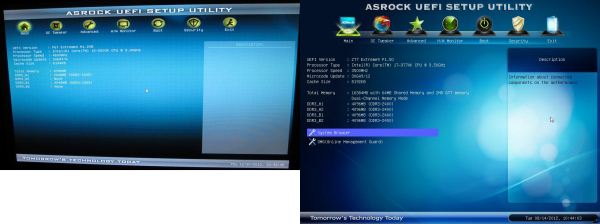
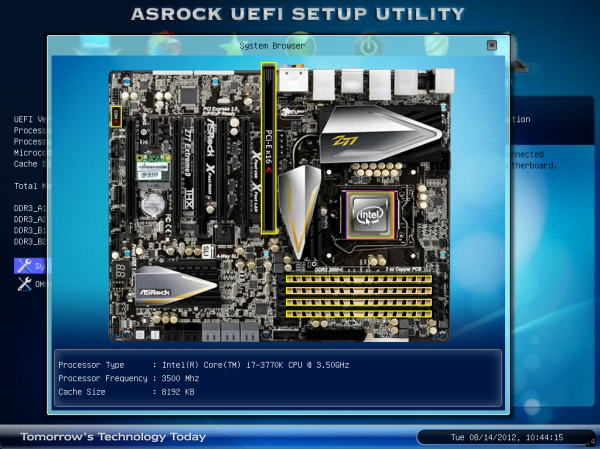
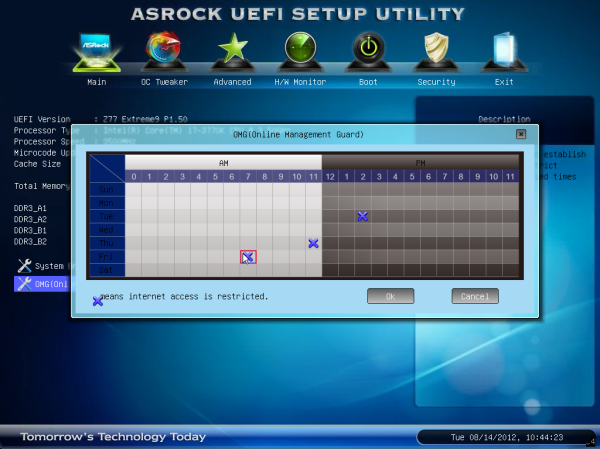
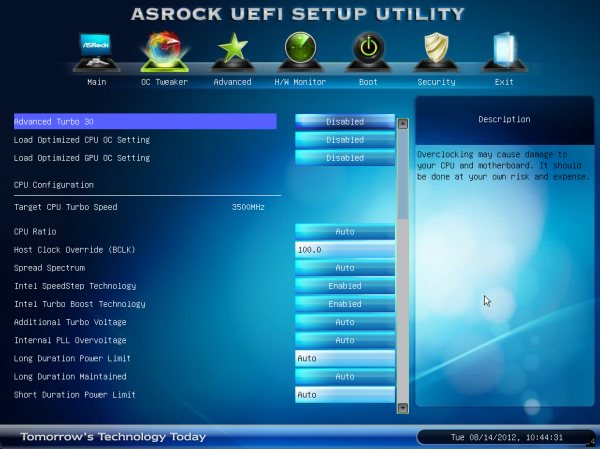
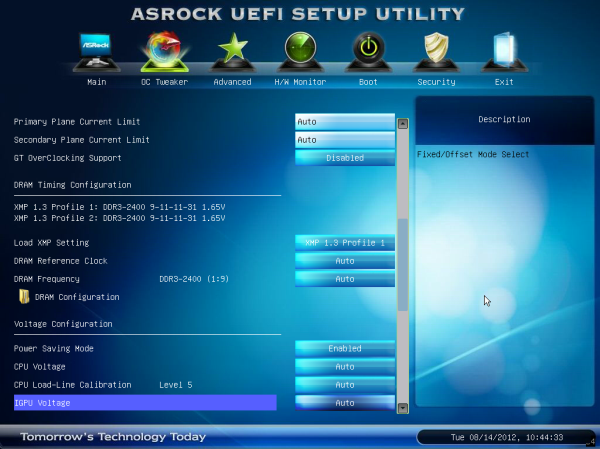
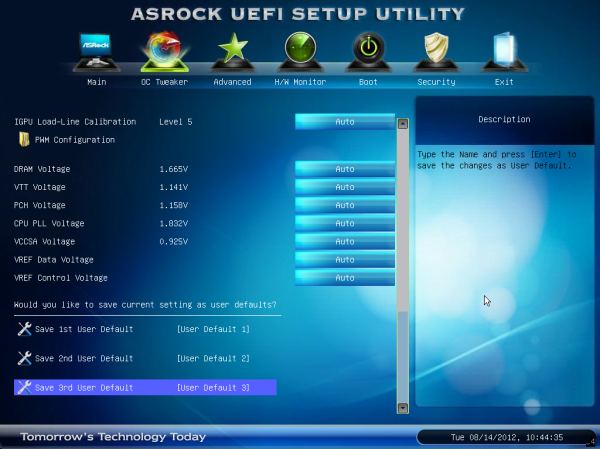

















24 Comments
View All Comments
Namesblank - Tuesday, July 26, 2022 - link
10 years later, people be looking for how to build system with 20+ GPUs lmaomayankleoboy1 - Wednesday, August 22, 2012 - link
Where are the GPGPU benchmarks? AFAIK, those are affected by the PCIE 3.0 bandwidth, as shown in the HD7970 review.Games are more or less happy with a PCIE2.0 x8 .
MrSpadge - Thursday, August 23, 2012 - link
A few GP-GPU apps are affected, most aren't. Even PCIe 3 is slow as hell from the perspective of the GPU, so you try to avoid external communication as much as possible.TimoKyyro - Wednesday, August 29, 2012 - link
I was hoping to see some GPU rendering too. I'm using CUDA on Blender and I really need more GPU power. It would be nice to know if there is a difference between 4x 680 or 2x 690 on different PCIe setups.extide - Wednesday, August 22, 2012 - link
Thanks for providing the diagrams of lane routing. I wish ALL manufacturers would supply a diagram with their boards so you know how to set it up when you are building a system. Sadly, these diagrams are the exception, not the rule. :(processinfo - Wednesday, August 22, 2012 - link
For me only EVGA seems worth consideration (I don’t like a fan on chipset though).I have few requirements that others do not meet.
I want PS/2 keyboard port (don’t care about mouse). I don’t see it as legacy. It is still superior to USB for keyboard. Works on interrupts instead of pulling, allows as many keys pressed without ghosting as you wish (know it probably does not matter in real life but I like that anyway).
Display port output is mandatory for me these days. While it is true that this kind of mobo will run dedicated graphics card (or more than one for that matter) I like to have output here for possibility to use it with CPU graphics if my graphic cards breaks and needs replacement (I had that happen and waited almost two weeks for new one). HDMI is no go because does not support high enough resolution.
Gigabyte is out for me because audio chip. Maybe it is better but it does not do 7.1 and I will lose two channels in my Tiamat 7.1 headset.
rwpritchett - Wednesday, August 22, 2012 - link
You should check out some of the newer USB keyboards. I don't know how they do it, but some of them can now do full NKRO without PS/2. My Nighthawk X9 can do full NKRO over USB.processinfo - Thursday, August 23, 2012 - link
Interesting but this is not possible with standard USB keyboard protocol. If it does that it has to use some tricks and most likely custom keyboard driver.Also I have Thermaltake Meka G1 that I like and I purchased because I got tired replacing membrane keyboards so I rather buy motherboard with PS/2 then new keyboard.
My point is that at this price point and clearly meant for gamers (who else is using more than one graphic card in non-workstation pc) they should think about such details especially when they go overboard with other ports, e.g., who needs all 4 kinds of display output on gaming mobo, or 10 USB ports on back plate alone (if you need plenty you can have them on bracket connected to header).
MacGyverSG1 - Wednesday, August 22, 2012 - link
I loved the review. The G1.Sniper 3 was on my short list for a while. Could get back on, though.I'm waiting for the ASUS Maximus V Extreme to get tested next.
I only need a motherboard to complete my new build. I plan on running this new rig for 6+ years so I want a board that can keep up with the times.
just4U - Thursday, August 23, 2012 - link
I am staying away from the Rampage/Maximus lines from Asus this time out as Gigabyte has pretty much brought better value accross the board on their gamer boards. I don't expect Asus to catch up till the next chipset..